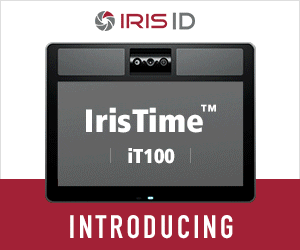For many organizations, access control is an area of critical importance. It’s also one that has seen steady technological advancements in recent decades.
In an earlier wave of innovation, traditional access control mechanisms like guard booths and even simple lock-and-key setups were replaced by the emergence of door lock mechanisms controlled by a PIN code or a swipe card. Then came contactless fobs, which remain in heavy rotation even as NFC-equipped smartphones encroach into their territory.
But in recent years, one of the most important developments in enterprise access control has been the adoption of biometric solutions.
Better Security and Beyond
Initially, companies began adopting biometric access control in pursuit of a much higher level of security than more conventional security mechanisms could offer, implementing things like fingerprint scanners at sensitive access points. But more recently, companies have begun to recognize the additional efficiency benefits of biometrics: help desks no longer need to deal with the hassle of replacing lost key cards, for example; and, more importantly, contactless access control systems have emerged that facilitate extremely high throughput.
IDEMIA’s MorphoWave scanner, for example, can scan four fingerprints simultaneously as a hand is waved over it, allowing for rapid, highly reliable biometric authentication on the move. It can scan 50 people per minute, making it a highly appealing solution for facilities that see the entry and exit of large workforces.
More Demand for Less Contact
That having been said, MorphoWave is something of an outlier in the world of fingerprint biometrics, where most solutions require physical contact with a fingerprint reader. Facial recognition and iris scanning, meanwhile, are two modalities that don’t require any physical contact by their nature, again allowing for rapid scanning and throughput.
The latter have been gaining traction over the last several years – Iris ID’s biometric technology, for example, was integrated into a high-profile AMAG access control platform in 2018 – but they’re now seeing even greater commercial interest amid a global pandemic that has pushed many organizations away from shared touch points of all kinds. The providers of these kinds of next-generation biometric access control solutions are even seeing government support: BioConnect, for example, was selected to participate in a high-profile, government-backed accelerator program in July of this year.
It’s clear that the enterprise sector’s embrace of biometric – and particularly contactless – access control solutions is one of the numerous tech trends that have been accelerated by the COVID-19 pandemic and its associated uptick in remote work and services. But the pandemic has also served to augment these technologies and to prompt the development of novel solutions.
Adaptation and Evolution

For one thing, companies offering biometric solutions based on facial recognition have raced to adapt their technology to accommodate the sudden prevalence of face masks. Given the importance of wearing masks to help mitigate the spread of the virus in public spaces this is a critical issue, and while the masks certainly have an impact on performance, some facial recognition vendors have demonstrated impressive resilience in the accuracy of their solutions.
Meanwhile, a number of providers of biometric access control solutions have now added temperature detection to their product offerings. Elevated temperature can be a sign of fever, which is one of the possible symptoms of COVID-19 infection. Being able to flag elevated temperatures at the entrance of a facility can therefore offer a valuable tool to organizations that are determined to keep the virus out of their workspaces.
What’s more, tying this fever detection technology to a biometric identification tool like facial recognition means that managers and administrators can get near-immediate updates about who among their staff may be too ill to work. It can even help to facilitate contact tracing in the event that an individual with elevated temperature ends up interacting with other staff members before being flagged for risk of infection.
These are still very new developments, and it’s not yet clear how widely these technologies will be deployed or how long they’ll be in place. But in these uncertain times, one thing that does seem clear enough in mid-2020 is that many things will remain uncertain for quite a while yet. Many organizations are now looking for the best tools available to allow them to resume and continue operations as effectively as possible despite all this turmoil, and the latest evolutions in the world of access control technologies are among them.
It’s all part of the broader trend of Digital Transformation in the Enterprise, in which biometric access control is now playing a more vital role than ever.
*
The Digital Transformation in the Enterprise FindBiometrics Special Event is made possible by our sponsors: BioConnect, Iris ID, and IDEMIA.
–
September 18, 2020 – by Alex Perala










Follow Us